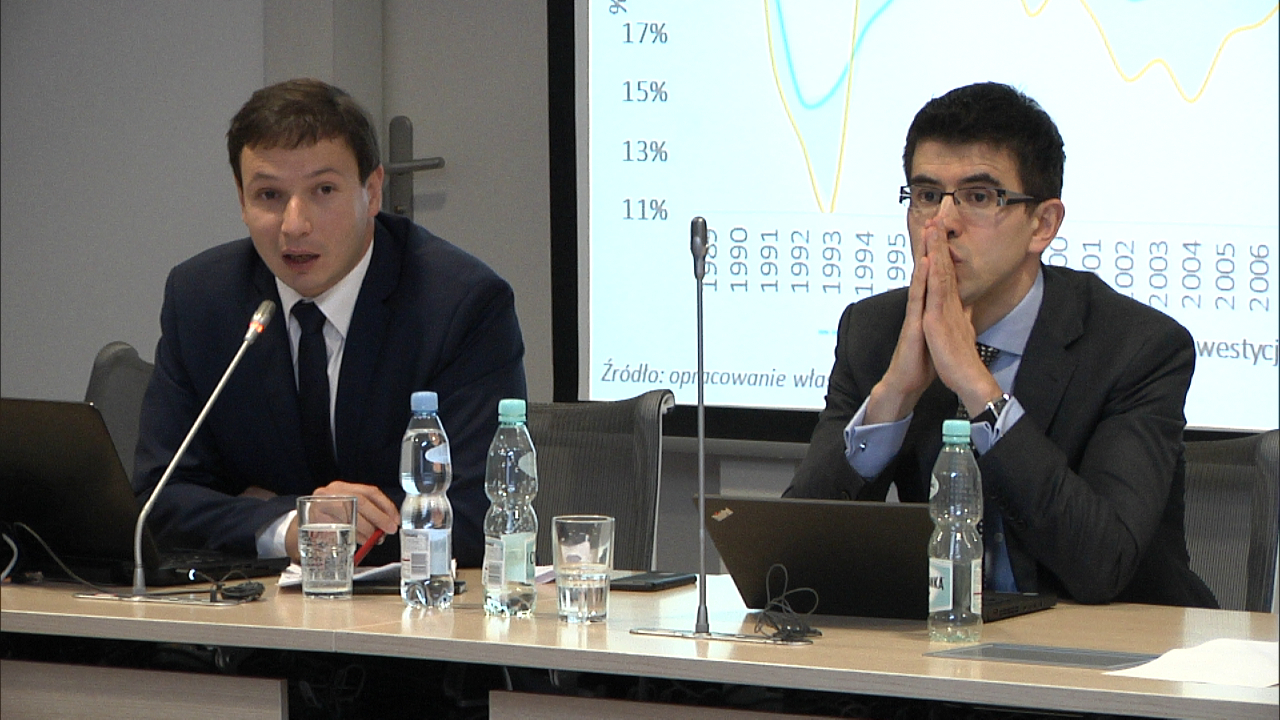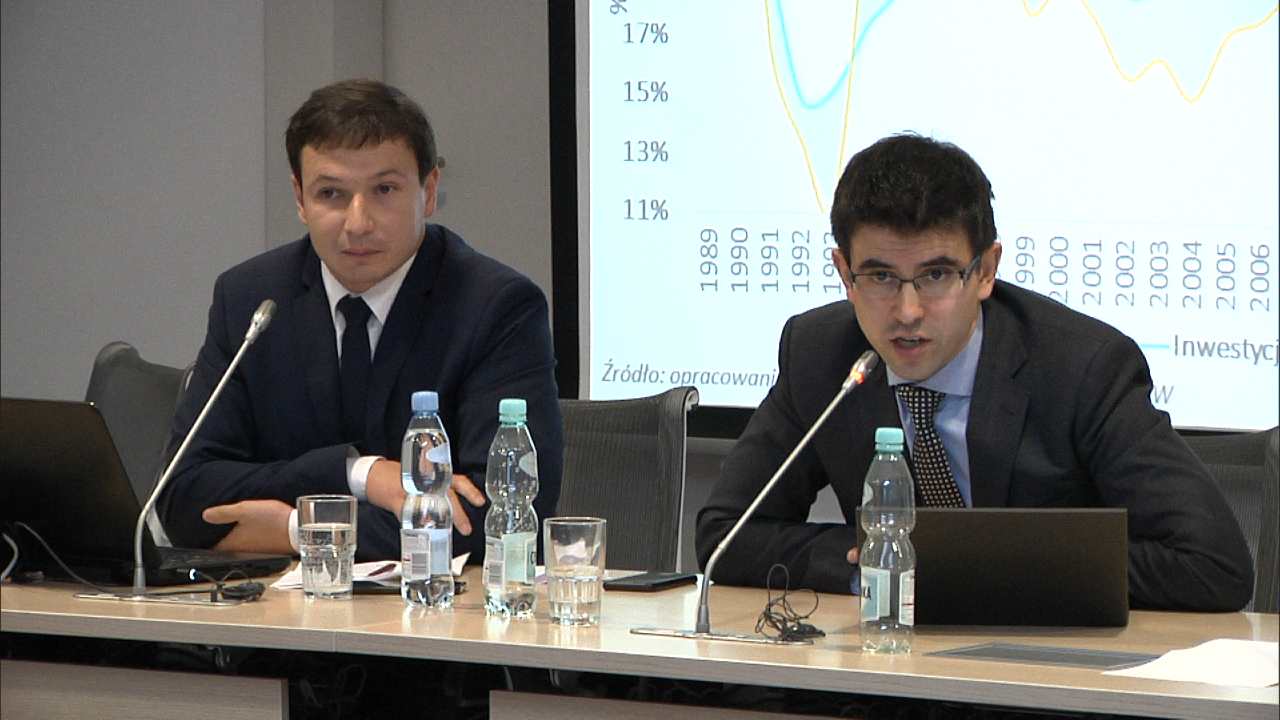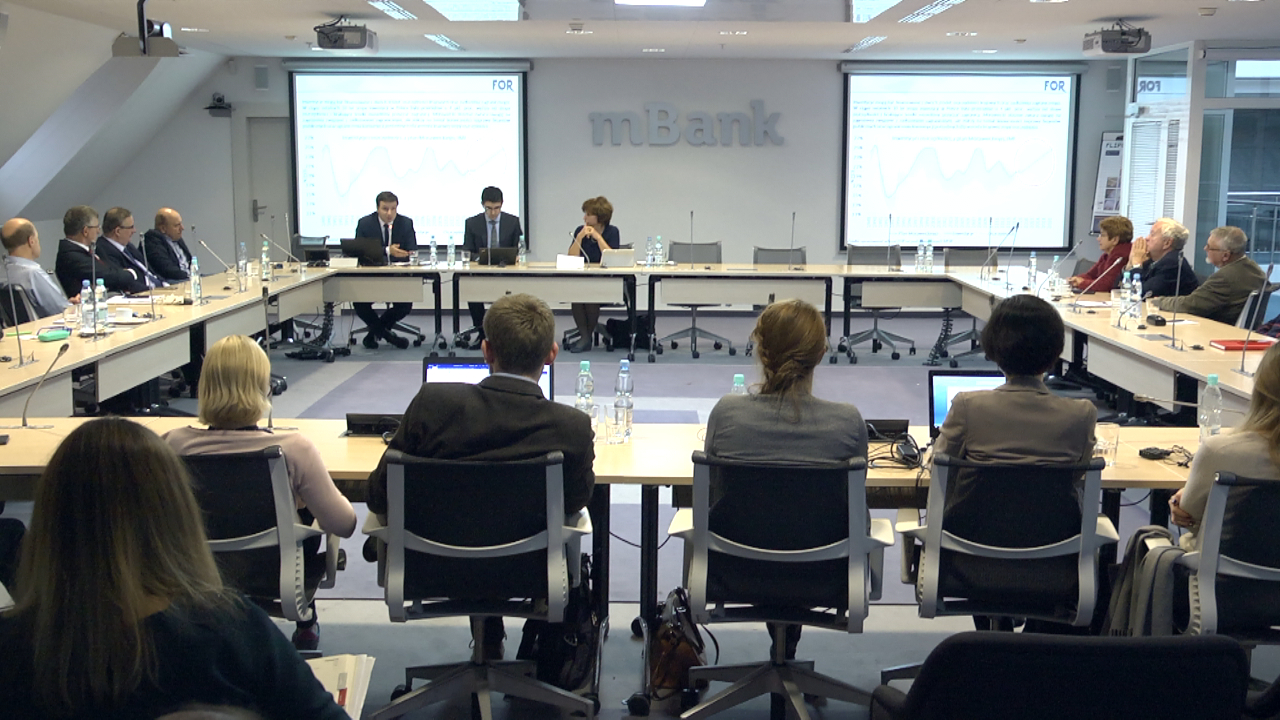26 Oct 2016
Economic policy, institutional environment, and the state of public finances in Poland. Possible scenarios.
During the 146th mBank-CASE Seminar, Aleksander Łaszek, vice president and chief economist of the Civic Development Forum (FOR), spoke about the influence of economic policy and the international environment on public finances. He said the slowdown in the world economy may have a significant impact on the situation in Poland, where output is strongly dependent on the global economy. Meanwhile, current growth is disappointing, and China’s slowdown, Brexit and the growing wave of populism aren’t helping. Already today, Poland has one of the largest structural deficits among EU members. According to Mr Łaszek, this state of affairs is driven by three factors, discussed below.

The structural challenges facing the Polish economy
Despite the good economic growth in Poland, we are seeing a constant slowdown in its pace. Part of this results from the exhaustion of channels related to transformation. Mr Łaszek also points out that the Polish economy is characterised by very many small enterprises, with low efficiency and productivity, which are protected by what the OECD calls one of the most restrictive regulatory schemes concerning free-market competition mechanisms. Additionally, micro-enterprises have no confidence in the judicial system, and are concerned by frequent changes in tax regulations and unstable law in general, and thus have no incentive to grow: they are afraid to invest, and prefer to operate partly in the grey zone.
Public finances in Poland
Poland has one of the EU’s highest structural deficits, but the ratio of debt to GDP remains limited thanks to fast growth of GDP (the denominator in this ratio) over the past 15 years. While over the past five years, public spending has been significantly limited in the area of social protection (old-age and disability pensions), general public services (debt servicing costs) and education, only the latter limitations can be long-lasting (in light of the demographic structure). Furthermore, analysing the influences of particular taxes on the revenue side of the budget we can note a decline in revenue from such taxes. which can often be explained by political changes, such as cuts in disability-pension contributions, allowances for children and a reduction in personal income tax. Another influence here is the high number of micro-enterprises, in which pay is often lower than in large companies, resulting in lower contributions to social insurance, the health system and workers’ income tax. In per-capita terms, an employee of a large corporation generates three times the revenue of a person working in a micro-enterprise. Things look different when we consider the loophole in VAT, from which inflows in Poland are very low, caused to a large degree by under-invoicing. Additionally, VAT responds to any economic slowdown by falling more sharply than the decline in GDP itself.

The government’s economic policy
The seminar guest pointed to many negative and inconsistent policy actions by the government. First and foremost is the 500+ child-benefit programme (which will increase public spending by more than 1.2% of GDP and cause an outflow of workers, particularly women, from the labour market), reducing the retirement age to 60-65 years (increasing the deficit by PLN 10 billion, and prompting about 800,000 people to leave the workforce in 2018 alone) and weakening the stock market. In turn, the tax on retail trade (suspended at the moment) may contribute to operational difficulties for the most productive shops in the country. The share of state-owned companies in the Polish economy is the highest in the EU-28, which severely limits the effect of competition. Mr Łaszek noted great inconsistency in government policies. On the one hand, the Responsible Development Strategy speaks of incentives to save and the lack of rapidly growing enterprises, and this statement is followed up with a range of positive steps (less burdensome regulations, easier succession in family firms, support for exports and joint collection of tax and social-insurance contributions). On the other hand, the bank tax was introduced (a tax on every thousand złotys of credit), CIT was reduced for small businesses with legal personality and the idea has appeared of a lower preferential rate for small companies (which is related to the risk of a backlash in the form of division of companies ). Another inconsistency is aid for threatened enterprises, which should be allowed to collapse so that other, more competitive companies can develop.
Finally, Mr Łaszek presented two exercises that encapsulate how fast we will reach the limits on public debt in the Maastricht Treaty and the Polish Constitution if economic growth turns out to be even slightly slower than the government’s very optimistic forecasts. In the first scenario, that of a slowdown of real growth to 2% annually, with a structural deficit that as a result of the reduction of the retirement age will grow to 3.5%-4% of GDP, we will find ourselves with a ratio of public debt to GDP growing at 2-2.5 percentage points a year; over two to three years we will exceed the Maastricht criteria, and in three or four we will reach the constitutional limit of 60%. The second scenario is of a decline in real growth to zero (a crisis in the global economy or the EU, or a domestic slowdown). In this case, the growth of the deficit will be exacerbated by an increase debt-servicing costs and a cyclical decline in VAT, so the deficit could grow to 4.5% of GDP, and we would reach the limits in the course of a year.
Systematic growth in public debt is difficult to undo
Commenting on Mr Łaszek’s remarks, Marek Rozkrut, an EY partner, chief economist and head of the firm’s Economic Analysis Team, addressed the question of public finances, also taking into account the macroeconomic aspect. He noted that economic growth in Poland has affected the limitation of growth in fiscal imbalances, in particular debt. Still, the systematic growth in public debt is disturbing, particularly when we take into account the very low level of private investment and savings, the end of Poland’s “demographic dividend” (when a population boom from the 1970s and ‘80s pushed up the working-age population ) and an economic slowdown among Poland’s main trading partners. The commentator agreed with Mr Łaszek that the government’s forecasts for the public finance system are usually too optimistic.
Mr Rozkrut stressed that the mid-term budget-deficit target planned at 1% of GDP will not be achieved by 2019. Regardless of government programmes, the revenue side is very significant, particularly actions to broaden rather than narrowing the tax base. The steps taken by this government and its predecessor in this area must be positively assessed, e.g. the fuel package, cashless payments and initiatives to combat VAT fraud in the steel sector. The speaker also pointed out that the grey zone is responsible for only part of the tax gap, and it is essential to distinguish the grey zone from tax fraud, which is done through registered transactions.

After this, the speakers and participants had a lively discussion. The main subjects were the appropriateness of applying the limitations on the budget deficit written into the Constitution and the Maastricht Treaty, the low propensity to save in Poland and the situation of micro-enterprises on the Polish market.

Watch the seminar on bankier.tv (in Polish)


